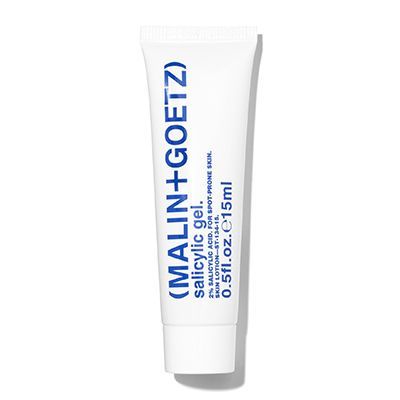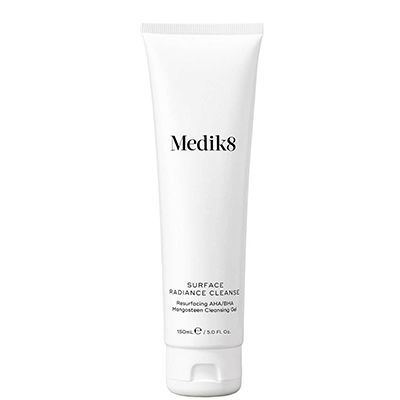I think we can all agree that, when it comes to acne, whiteheads really take the spotlight for being the most annoying. For starters, they can hurt like hell, but they’re also really hard to conceal with make-up, thanks to their angry red base and protruding white mound.
They’re also really common. So if a constellation of raised, pallid dots has appeared on your forehead, chin or jawline know that you’re not alone in your quest to get rid.
‘I have rosacea, this is my new and improved 4-step skincare lineup’
Not sure how to get rid of whiteheads? WH called upon the experts to find out how to treat and prevent whiteheads – so that you don’t have to freak out about your breakout. Here’s the low down on the causes, treatments and how to prevent congestion from the get-go.
What are whiteheads?
‘Whiteheads, also known as closed comedmones, are a blocked pore filled with sebum, dead cells and bacteria. Unlike a blackhead, the material is trapped under the skin. Lots of factors contribute to why you get them, including use of incorrect products, over-exfoliation, stress and hormones,’ explains Dr Ifeoma Ejikeme, Medical Director at Adonia Medical Clinic.
Why do I get so many whiteheads?
1. Stress and hormones
‘A stressful event leads to a physiological response in the body which we call the ‘flight or fight response’ – it prepares our bodies to flee from danger,’ Dr Stephanie Munn, Clinical Lead for Dermatology, Bupa Health Clinics, previously explained to WH.
So, how does that play into your face? ‘The stress hormones cause the release of chemicals which increase blood flow to the skin. This can trigger both rashes and redness, while the same hormones can lead to breakouts.’
2. Hair products
These can also be the source of a spotty forehead. Often containing ingredients like coconut oil or cocoa butter, gels, pomades, sprays and other products can mix with debris on your forehead and clog your pores, as can dandruff.
How to get rid of your blackheads at home, according to a derm
Similarly, if you have a fringe, keep it clean. ‘Hair will rub against the forehead skin causing irritation and potentially contributing to break-outs (acne mechanica)’, says Dr Anjali Mahto, consultant dermatologist and founder of Self London. ‘If your hair is oily, this may further aggravate the problem’, she adds.
3. Wearing a cap or helmet
If you sweat while wearing them and then leave them to their own devices, they become a breeding ground for bacteria. The cloth that touches your forehead should be sanitized on a regular basis.
4. Touching your face
‘Touching the face, using mobile phones against the skin and repeatedly using make-up brushes that have not been washed are also thought to increase the risk of whiteheads developing. In acne, often a particular area of skin (e.g. the more sensitive areas such as the jawline and area) are more prone to whiteheads,’ says aesthetic doctor, Dr David Jack.
How to get rid of whiteheads
1. Use Salicylic acid
Salicylic acid, a BHA, is the only acid that’s oil-soluble, which means it’s able to infiltrate the pore lining to flush out dirt, oil and dead skin debris. ‘Products containing salicylic acid are my go-to for skin with whiteheads. This will help to clear the pore, minimise the risk of infection within it, and also help regulate oil production within the skin long-term,’ says Dr Shotter.
You’ll find salicylic acid in lots of products, but start with cleanser such as Kate Somerville Eradikate Daily Foaming Cleanser and wash your face twice daily. You can then follow on with salicylic acid toner or serum. If you have sensitive skin then it’s wise to pair salicylic acid with niacinamide.
Use of salicylic acid can lead to irritation, which is where niacinamide (vitamin B3) comes in. A superhero vitamin if ever there was one, it’s usually well tolerated by the skin and has a whole host of benefits. ‘Niacinamide is a fantastic anti-inflammatory, helping to reduce acne, redness and discomfort,’ explains Dr Janet Mason, in-house skin expert at skincare brand Q+A. Like any good relationship, these two ingredients also share the same end goal: evening out skin tone.
2. Pimple patches
Pimple patches are a great way to treat whiteheads and they’re very targeted and deliver an potent blend of ingredients via a hydrocolloid dressing. They can be effective for surface-level pimples, helping them heal faster and reducing inflammation.
3. Alpha hydroxy acids
‘Deploying AHAs (such as glycolic and lactic acid), which reduce sebum production and increase cell turnover on the skin,’ says Dr Jack.
Try Dr. Dennis Gross Skincare Alpha Beta Universal Daily Peel. A word of warning though, this peel is hardcore so if you have uber sensitive skin then steer clear. However, if your skin is made of stronger stuff then this powerful formula should be your go-to. Brimming with five types of acids (including salicylic, glycolic, and lactic) as well as retinol, whiteheads don’t stand a chance.
4. Benzoyl Peroxide
“The key to treating whiteheads will also help to prevent the formation of others,’ Dr Adil Sarwar, aesthetic doctor & founder of Skin Science Clinic.
‘Some of the ingredients below are accepted as dermatologists globally as the gold standard,’ he adds. ‘Benzoyl Peroxide – available in many different forms, the maximum strength I would recommend 10%. By its own decomposition benzoyl peroxide releases bacteria which eliminates bacteria and prevents future breakouts. Cheap formulations can stain clothes, so be careful,’ clarifies Dr Sarwar.
5. Retinol
‘Adding a retinol serum to your routine will help promote cell turnover preventing future clogged pores from becoming whiteheads,’ explains Medical Director Melissa Wood from Skin Emporium.
6. Tea tree oil
Tea tree oil has antioxidant, anti-inflammatory, and antimicrobial properties. A 2019 review notes that tea tree oil is effective for mild to moderate acne, and most people tolerate it well.
7. Consult a dermatologist
If you have persistent or severe whiteheads and are struggling to treat them, then seek professional advice.
How to prevent whiteheads from coming back
1. A consistent skincare routine
A consistent skincare routine will certainly help to prevent whiteheads from making a comeback. Regular exfoliation removes the layer of dead skin that can clog pores, while a gentle cleanser helps remove excess oil without irritating the skin. Keeping your skin properly moisturised also ensures that it doesn’t overproduce oil, which can also lead to breakouts.
2. Clean your pillowcase
Time and sleep are always the best healers, however, there are steps you can do to encourage whiteheads to disappear quicker. Ensure you sleep with a clean pillowcase, as bacteria can sit on the pillow all night. Turn your pillow over daily and wash them often.
3. Wash your makeup brushes
It’s something we’re all guilty of at times, but washing your makeup brushes is absolutely essential for keeping your skin clear and preventing breakouts. When makeup brushes are left dirty, they become a breeding ground for bacteria, oils, and old product residue. Every time you use a dirty brush, you’re essentially transferring all that onto your face, leading to clogged pores and potential spots.
If you’re in the market for a fresh set of brushes, Morphe’s latest set are treated with silver ion, which is known to have antibacterial benefits.
How do I get rid of whiteheads on my forehead?
As well as the skincare ingredients mentioned above, beta carotene-rich foods will also help alleviate forehead whiteheads. Think yellow-orange fruits and vegetables such as carrots, apricots, butternut squash and mango. They all contain vitamin A, which your body converts into retinol to help keep collagen levels in skin cells balanced and promote healthy cell growth.
Should you squeeze whiteheads?
Not really. ‘The worst thing to do is to pop whiteheads at home without really knowing what you’re doing,’ explains Dr Sophie Shotter, from Illuminate Skin Clinic.
‘The material is trapped under the skin squeezing will only further traumatise the skin, leading to redness in light skin types and hyperpigmentation in darker skin types. Instead, focus on optimising your routine to reduce the inflammation in the current spot and preventing further spots,’ adds Dr Ejikeme.
Are blackheads and whiteheads the same?
‘Whiteheads occur when dead skin cells, oil (sebum) and dirt become trapped in the pores, they differ to blackheads as they are closed within the pore, whereas blackheads can be pushed or squeezed out,’ explains Dr Giuseppe Aragona, GP and Online Doctor for Prescription Doctor.
Do whiteheads go away on their own?
‘With time (up to seven days) the majority of whiteheads will resolve on their own, but not in all cases. It is better to be pro-active and try some of the treatments listed above. This minimises the risk of the whitehead progressing to a nasty cyst,’ says Dr Sarwar.
This article originally appeared on Women’s Health U.K.























